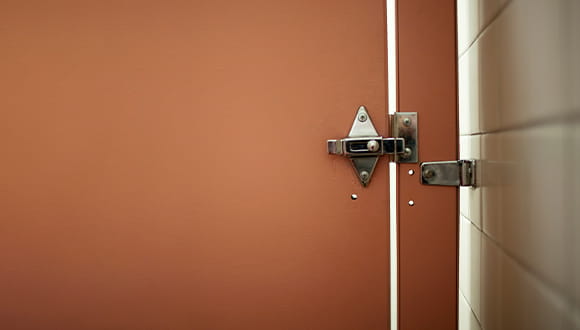Is "Breaking the Seal" Actually a Real Thing?
Dec. 30, 2021 - Katie McCallumThe infamous seal.
You likely don't think about it much until you're having a few drinks at a bar with your friends or downing a caffeinated beverage on a road trip.
You start to feel that urge to go, but you resist — thinking: I can't break the seal yet.
Because we all know what comes after that first trip to the bathroom...or do we?
What does breaking the seal mean?
Urban legend defines breaking the seal as the first time you urinate while drinking alcohol. The flood gates officially open, and there's no turning back.
The theory is that after you make the decision to go to the bathroom the first time, you break "the seal" and become destined for countless return trips — ultimately spending more time in the bathroom stall than with your bestie.
But for every warning we've whispered to ourselves about not breaking it, our brain has whispered back with skepticism: Is breaking the seal an actual thing?
Does "the seal" even exist?
We'll spare you the anatomy lesson, since one isn't even needed.
No, there's no "seal" in your bladder that, when broken, sentences you to hours of peeing more than usual.
With fluid consumption, there's the fluid you use and then the fluid you lose. Sure, you use a lot of what you drink, but your body can only process so much fluid, and the rest gets sent to your bladder to be removed via urination.
And when exactly your body decides that it's time to empty your bladder has nothing to do with a seal. It's about space and pressure in your bladder — and maybe a few other things, too.
This is why fighting the urge to break the seal seems to apply beyond just drinking a beer at a bar with your friends. Remember that caffeinated beverage on a road trip we mentioned?
So why do you have to pee more often while you're drinking?
It really should come as no surprise that when you're drinking to, well, just drink — rather than for hydration or nourishment, for instance — there are consequences.
For starters, the the average adult bladder can only hold between 16 to 23 ounces of fluid, and the urge to pee can hit after just seven ounces. Measured another way, that's less than a single pint glass...
When you're drinking more than usual — say, a few pints — you can expect to lose more fluid than usual, too. As you fill your bladder, over and over, the increased pressure signals that it's time to let some fluid out, over and over. And it's important to let yourself do so, since frequently holding it in can, over time, lead to weakening of bladder muscles and urinary tract infections, according to the National Institute of Diabetes and Digestive and Kidney Diseases.
Plus, as far as fluids go, alcohol acts as a diuretic, meaning it causes you to lose even more fluid than usual. It does so by suppressing a hormone called vasopressin, which is usually around to help your body properly regulate and conserve water. To make matters even worse, alcohol can also irritate your bladder, increasing the intensity of that urge to pee.
And it's not just alcohol that can make you more likely to feel like a seal has been broken once you do go.
Caffeine can stimulate your bladder muscles to contract, so drinking a caffeinated beverage may also lead to you using the restroom more than usual — even when your bladder isn't full.
So whether you're drinking alcohol, caffeine or just a lot of anything, know that there's no seal deciding your restroom fate — just you, taking sip after sip after sip.








